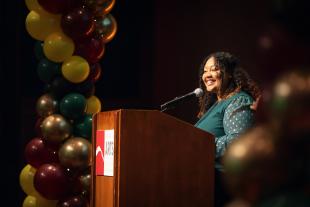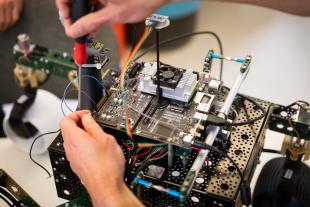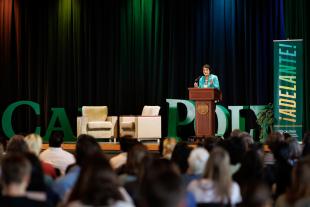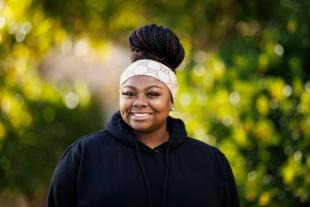'Indigenous People Are Still Here.' Student-Led Campus Tour Highlights Native Connections

Like most public spaces in California, Cal Poly lies on land originally held by Indigenous people — in this case, the yak titʸu titʸu yak tiłhini (ytt) Northern Chumash tribe. That connection — along with other campus ties to Native culture and history — is being explored in a new interactive campus tour developed by students.
The tour, which was developed by students participating in both BEACoN Research Scholars and Summer Undergraduate Research Project programs, is designed to shed light on aspects of Native American history that intersect with locations, names and objects around campus.
“Historically, we've done a really bad job in California of recognizing that Indigenous people are still here,” said ethnic studies professor Lydia Heberling, who coadvised the project. "This is a small step that we can take toward re-centering California Native peoples in the present.”
The tour begins, appropriately, at the yakʔitʸutʸu housing community on campus, a residential complex for first- and second-year students named for and designed to model the locations of the original ytt village sites of San Luis Obispo County. The complex is also home to the Native American and Indigenous Cultural Center (NAICC).
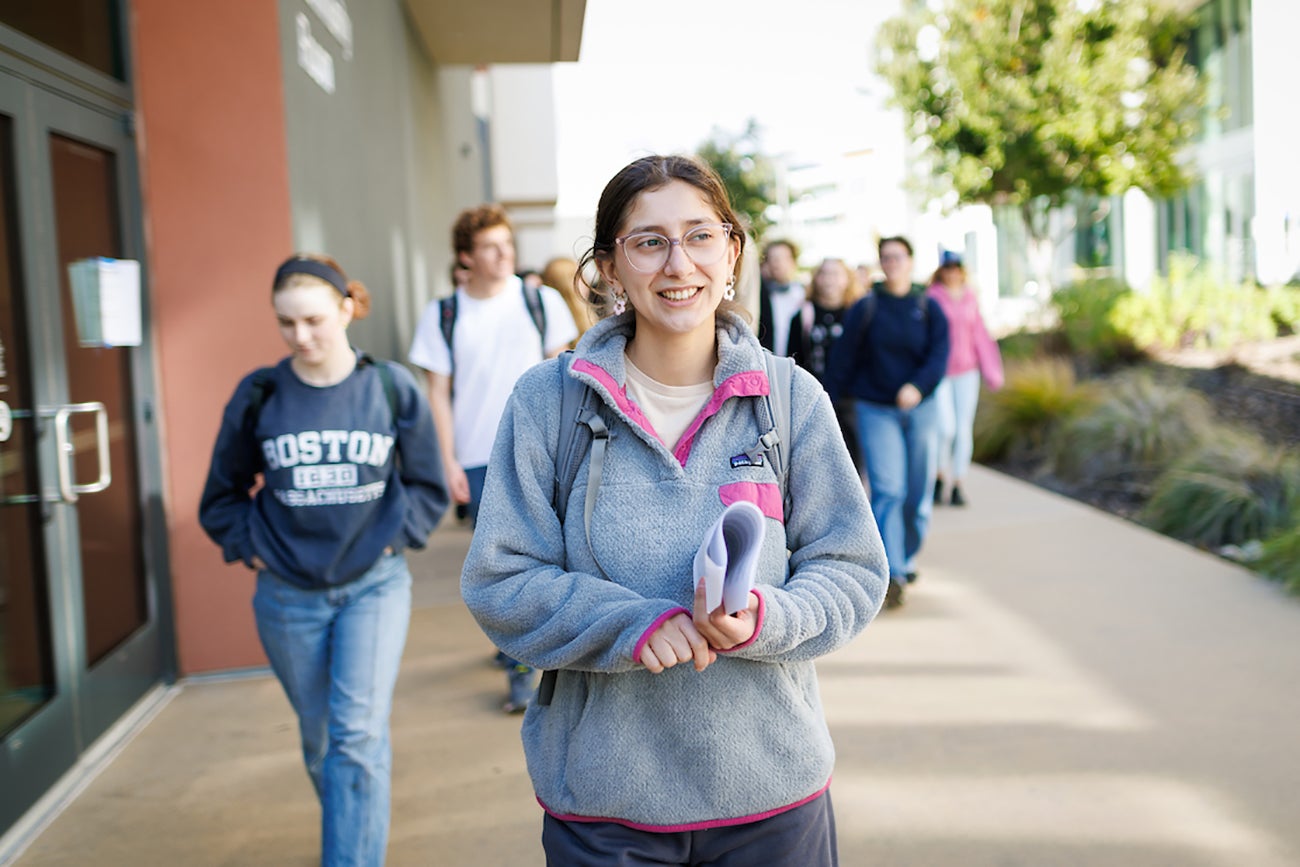
The tours include a discussion of the geography of the county’s original ytt settlements; an introduction to the student experience at NAICC; stops at Muir and Tenaya residence halls for lessons about key moments of Indigenous resistance to settlers; visiting a mural painted by an Aztec artist at the Baker Center that celebrates Indigenous knowledge ; and a discussion about cultural practices and land stewardship around a cluster of native white sage.
Visitors can experience the tour in one of three ways: a guided in-person tour with a member of the research team, a self-guided tour with a printed booklet, or a digitally guided tour using the team’s ArcGIS story map.
Ethnic studies student Amy Contreras and computer science and ethnic studies student Sophie Martyrossian initially began working on the tour in early 2023 along with ethnic studies professors Becca Lucas and Lydia Heberling, who brought the idea from the University of Washington, where a Native undergraduate student had developed a similar Indigenous walking tour.
As they developed the tour materials, the students conducted interviews with ytt tribal members, did their own archival research and learned human research standards critical to avoiding past mistakes in anthropological research. They also collaborated with members of the ytt tribe to ensure a respectful and accurate tour experience.
“One of the important goals in the research and development part of this project was to think through the stakes of how we approach conversations with tribal members, given the not-always-great history between researchers and Indigenous communities,” said Heberling. “We wanted the students to learn how to approach that aspect of this project in a relational way, in a respectful way, and in a way that centers the interests of the tribe, so that we’re not just taking their information without doing something with it that does some good for them.”
One thing that the tour notably does not include is any reference to sacred or cultural Indigenous sites that may or may not be on campus. That was an intentional omission, at the request of the ytt tribal members who worked with the group.
“Something really important I learned is the phrase ‘sacred is secret,’” said Contreras. "When it comes to doing research about Indigenous people, you have to really be okay with the information that they provide — that there might be things they don’t want to divulge. No matter where you step, no matter where you are, you always have to come with good intentions.”
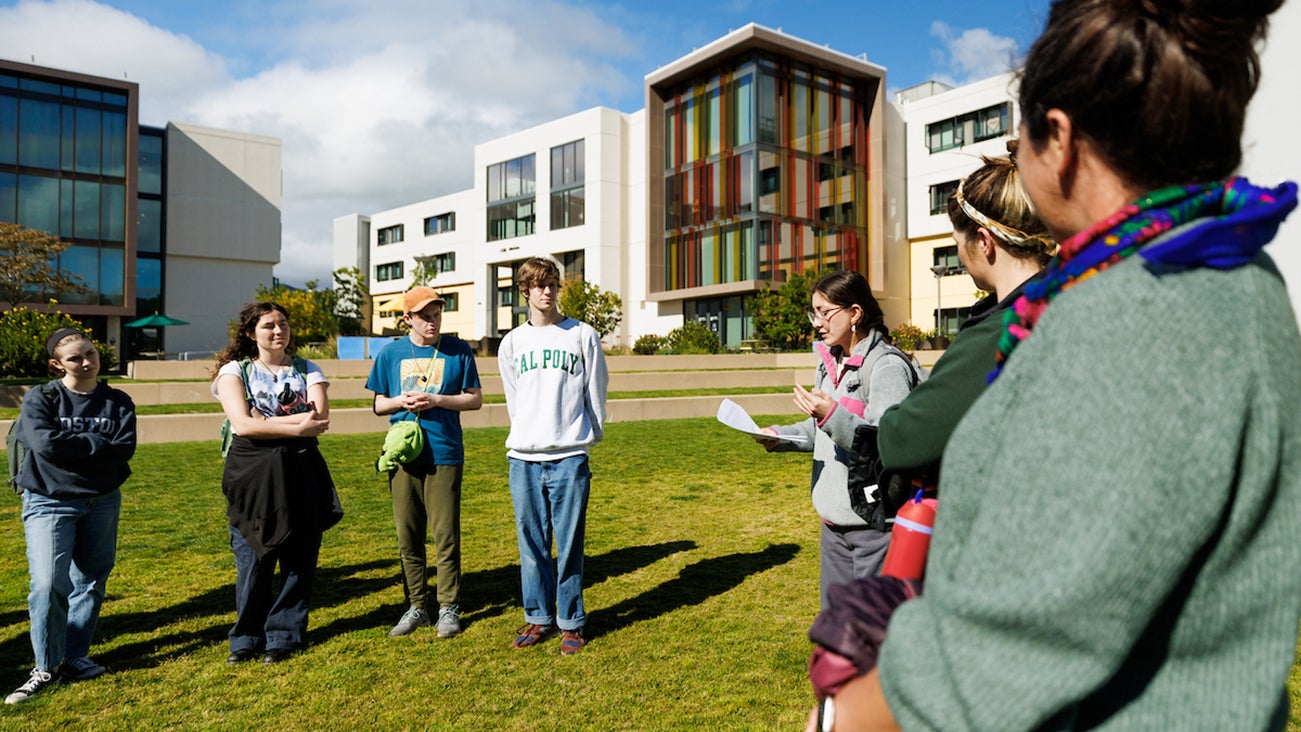
As the tours become available to the general public, the students and professors that developed it hope it can lead to better cooperation and understanding in the future.
“Our deeper hope for this project is that it acts as a model of how to interact in a positive way with a tribe, whether it is here in San Luis Obispo or in any university setting,” said Lucas, who is a member of the ytt Northern Chumash tribe and helped facilitate connections with key tribal leaders. “There's a lot of interest on campus in working with the tribe, which is awesome, but to really ensure mutually beneficial conversations, and the ability of researchers to hear ‘no,’ and to stop and pivot if that happens, is really important in any working relationship, academic or otherwise.”
Many of the discussions on the tour touch on areas of history not often covered in history or social studies classes — for example, the story of the Ahwahnechee tribe who occupied the Yosemite Valley in the mid-1800s, holding out against attempts by the state of California to forcibly relocate them to reservations.
“Something that both of us hear consistently as we teach upper division ethnic studies courses is, ‘How have I never heard of any of this before?’” said Lucas. "If we can have those experiences with members of the community, I think that would be huge. It's not about trying to make anyone feel bad about the past — it’s about bringing everyone along so that collectively we can do better in the future.”
Header image above: Ethnic studies professor Becca Lucas, in the green Cal Poly sweatshirt, presents during a tour stop at the University Union. Contreras and Heberling stand near her.

